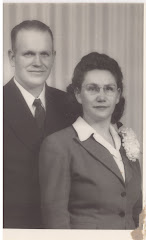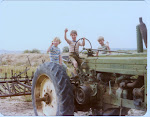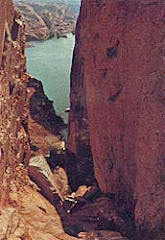COLONIZATION OF WYOMING BIG HORN BASIN
The following is taken from the codymural.com website. It was created to show the murals in the beautiful Chapel of The Church of Jesus Christ of Latter-Day-Saints in Cody, Wyoming that is in part a historic visitors center with a small museum dedicated to the Mormon Pioneer colonization of the area.
He said, "I do not wish men to understand I had anything to do with our being moved here: that was the providence of the all mighty; it was the power of God that wrought out salvation for this people. I never could have devised such a plan." (Journal of Discourses 4: 41.")
Portraits of Richards, Chatterton, and President Snow:
Knowing of the Latter-day Saints' success in colonization, the Governor of Wyoming, DeForrest Richards, and Secretary of State, Fennimore Chatterton, came to Salt Lake city in January of 1900 and called upon Church President, Lorenzo Snow. The Governor asked that a colony of Latter-day Saints be sent into the northern part of the Big Horn Basin to assist in settling this part of Wyoming. The Governor was assured that a colony would be sent. In February this group, representing the colonizers, investigated the area offered by the Governor and reported the project as feasible, and a group started for Wyoming in April of 1900, just three months after Governor Richards met with President Snow.
Over a hundred families responded to the call of the Church, sold their homes, and took only what they could carry in their covered wagons. They were sent under the direction of Apostle Abraham 0. Woodruff. These families regarded their call as the will of their Heavenly Father.
Leaders of Big Horn Colonization Company
These are the leaders of the original Latter-Day Saint Pioneer Company that came to the Big Horn Basin. All eleven of them were sent to report on the feasibility of the proposed settlement in the Cowley, Byron, and Lovell area along with the construction of a canal.
Mormon Pathfinders of the Big Horn Basin
Front Row: George H. Taggart, Byron Sessions, Abraham O. Woodruff, Wm B. Graham, Brigham L. Tippetts, S.P. Sorensen Back Row: Charles A. Welch, Hyrum K. North, John Stevens, William G. Simmons, John J. Simmons
Picture taken in Bozeman, Montana, on the groups return from the Big Horn Basin February 1900
Mormon Pathfinders of Wyoming Big Horn Basin
Front Row: George H Taggart, Byron Sessons, Abraham O Woodruff, Wm B. Graham, Brigham L. Tippetts, S.P. Sorensen, Back Row: Charles A. Welch, Hyrum K. North, John Stevens, William G. Simmons, John J. Simmons. Picture was taken in Bozeman, Montana, on the groups return from the Big Horn Basin February 1900.
Map of Trail Into Big Horn Basin
After they returned, and gave a positive report, it was agreed that the immigrants would meet at Ham's Fork, Wyoming by April 25, 1900, and from there travel together to the Big Horn Basin.
Photos of Wagons Camped at Ham's Fork
These photographs show two of the pioneer companies camped at Ham's Fork in April of 1900. Several days out from Ham's Fork, the colonizers encountered a blizzard, which continued for three days. The wagons were forced to travel through snow over two feet deep. A two-year-old girl, the daughter of John and Avilda Dickson, was taken seriously ill with pneumonia. Despite efforts to save her, she died one night during the storm.
Building Coffin For Little Girl
No boards could be found in the camp, so parts of wagon end gates were used to fashion a small coffin, and the little body was sent back to Utah for burial. The company, though saddened by the death, moved on. After nearly a month of travel, they arrived at their destination with only tents to live in.
Buffalo Bill Cody
The well-known Buffalo Bill Cody met the pioneers at Eagle's Nest and offered them land on the South Fork of the Shoshone River. He told them of his project on the South Fork of the Shoshone River and, of course, any development there would help him and his partner. But the group decided on the area around Lovell, Cowley, and Byron where Governor Richards had suggested.
William Buffalo Bill Cody
Ground Breaking
Knowing that irrigation water would be essential to the growing of any crops, on May 28, about 200 of the colonists met at the head of the proposed canal, which was later known as the Sidon Canal. A hymn was sung and then all knelt on the ground while Elder Woodruff dedicated the land and the future canal to the Lord for his people. Elder Woodruff then outlined the task that lay before them.
Map of Canal Route
The canal, he told them, would be 37 miles long and would irrigate from twelve to fifteen thousand acres. The work was to begin the next day. He told them that it would require a united effort, for they were few in number. Then he said, "As an Apostle of the Lord, Jesus Christ, I call each of you upon a mission to help build up this country. If you will do this and keep the commandments of God, the Lord will bless you forever." In the group were some who were only visiting family. Feeling that they had been called on a mission, they went home got their affairs in order and returned to help.
Ground was then broken for the canal. Byron Sessions, the construction superintendent, drove the team while Elder Woodruff held the plow to make the first furrow.
Canal stock Certificates
Actual stock certificates were issued to help finance the canal. The certificates were signed by Byron Sessions. As I stated, the families had no homes, but lived in tents and wagons while work progressed on the canal. Rattlesnakes and wood ticks were frequent visitors, while dust storms and flies made housekeeping and cooking extremely challenging. A bowery was built for meetings, Church services, and dances, all of which were needed to maintain their morale under their pioneer hardships.
Byron and Garland Oil Fields
Prophetic happenings occurred numerous times to those pioneers. Elder Woodruff made an interesting prediction as he looked east over the land to be irrigated by the canal, near the Byron town site. "Hold onto your 1and" he said. "Do not 1et it fall into other hands. There are treasures under the ground." Several years later, in this very area, oil was struck as well as natural gas, and has proved to be a source of much revenue to those who owned the land. Hundreds of oil and gas wells now dot the area referred to by Elder Woodruff.
Men Working on Canal
Work on the canal was hard using the implements of the day, which consisted mostly of hand tools such as shovels, picks, and, horse-drawn, plows, fresnos, and scrapers. It was slow and very discouraging.
Pioneer Family Sculpture
This project would not have been completed without the determination and dedication of strong, hard-working families. The families supported one another during trying times and had great faith in God. Stan Johnson, of Mapleton, Utah, created this original bronze sculpture showing a fresno pulled by four horses. It depicts a family working together with a fresno to build the canal to carry the life-giving water essential to the very existence of those pioneer families.
Burlington Railroad
However, in spite of their dedication, it soon became apparent to these hardy settlers that the canal was going to take much longer to complete than originally expected--perhaps years longer. They had no homes, no money, and they were running out of food. Discouragement began to set in. A special prayer was held imploring the Lord to open a way for them to complete the canal. What occurred shortly thereafter was termed "modern manna" by these early settlers. They were suddenly and unexpectedly contacted by the Burlington Railroad officials, who offered them $80,000 to construct 23 miles of railroad grade through this area. The money provided the food, clothing, and capital needed to continue work on the canal.
But despite this special aid, work on the canal progressed slowly through the winters of 1901 and 1902. Miles of digging still loomed ahead. The directors of the project wondered if the canal would ever be completed. Elder Woodruff heard of their discouragement and made a special visit to the area.
After hearing their doubts about completing the canal, Elder Woodruff said, "If you brethren feel you cannot do it, I will go back to Salt Lake City and ask President Snow to excuse me from my labors for six months as an Apostle, and I will buy some overalls and heavy boots and will come back here; and we will either finish the canal or we will lay down our bones in it together." Inspired by the dedication of this young Apostle, the directors committed to finish the work and were ably supported by those faithful pioneers.
Celebration at Completion of Canal
Finally, two years later, after much sacrifice, the project was completed! On April 23, 1904, at 5:00 p.m., water reached the end of the canal. A resident of Cowley recorded, "A number of shots were fired. The joy of the people is great."
Apostle Abraham 0wen Woodruff
1872-1904
Two months after the completion of the canal, Elder Abraham 0. Woodruff, who had inspired and directed the project from the beginning, died suddenly at the age of 32, a victim of small pox. Charles A. Welch, one of the original colonists, wrote of Elder Woodruff, "He was a wonderful man...He had a lovable disposition which drew all people toward him. He would come out to the Big Horn on his visits and go from tent to tent, calling every man and boy by name, without the least hesitation. He loved the Big Horn people with a father's love and wanted them to succeed in this land." The settlement of this area by the group that was sent by the Church in 1900 would not have been successful without the encouragement and urging that they received from Apostle Abraham 0. Woodruff. It is suitable that we should honor the memory of Apostle Woodruff with this lovely bronze. Without his continual leadership and encouragement, this 1900 group could have failed in their efforts to get water on the land.
And succeed they did. Today, the Basin is covered with thriving communities, oil fields, agriculture, and industry, in large part as a result of the dedication and faith of strong, hard-working families, past and present, living here in the Big Horn Basin.
Otto-Burlington Early Settlers
We have talked of the hardships endured by the group coming in 1900, but the early settlers who came on their own to the Otto-Burlington area in 1883 and 1884 had even greater problems.
The first group left Ashley Valley early in the spring of 1893, their wagons loaded with their possessions and enough supplies to last for some time. Extra horses and some cattle were herded along with the wagon trains. Some miles of their route led them over the same trail followed by their parents in the fifties, headed for Utah by wagon train or handcarts. After crossing South Pass in Wyoming, they passed Lander and finally reached the Greybull River, a few miles above Meeteetse. They went down that river, stopping at a site about seven miles west of the present town of Burlington. This spot became known as Mormon Bend.
It had taken them two months of difficult travel, with streams to ford and mountains to cross, to reach their destination. Until homes could be constructed, they threw up temporary shelters of cottonwood branches and slept in their wagons. Cooking was done in the open. They busied themselves building rough cabins of pine logs hauled from the mountains or of the more easily available cottonwood logs, which grew along the river. These cabins and roofs of poles and willows were covered with dirt and had dirt floors. As well as building the cabins, the men immediately began work on a canal for irrigating their crops.
The winter of 1893-94 was cold and stormy. This was rough going for those settlers who had left fairly comfortable homes in Utah. It was apparent that the Burlington flat would not be an easy land to bring under cultivation. It was covered with sagebrush and salt sage, with much cactus, and there were gravel ridges running through it. But, water was available, and the people who had arrived began working at once on various irrigation systems. The first two projects failed because they were too hard and expensive, but without water there could be no crops, so canal building was of prime importance in the Big Horn Basin. On May 10, 1895, the Farmer's Canal Company was incorporated at Burlington, as the new settlement was called.
They needed all their determination to build that canal. Teams and slip scrapers were their only equipment, except for their shovels. The diversion dam was built of trees, willows, and boulders. During high water the dam often washed out, entailing the job of rebuilding it, but the necessity of water for their farming operations spurred their determination to carry on. Success finally rewarded their efforts. In three or four years fifty Mormon families took up land under this project.
After the first house in Burlington was built, land was donated for the first Mormon meetinghouse. It was built with a dirt roof. It is said that the first Church of Jesus Christ of Latter Day Saints church services were held in a field with the congregation sitting on wagons, plows, or anything that was handy.
The settlement of those first families had not been under the auspices of the church, but in 1894, following the advice of President Wilford Woodruff, a Branch was formed at Burlington, and in 1901 the Big Horn Stake was organized.
These first years were at a time of a national depression, and money was a scarce item. Barter was a way of life with people trading produce and services among themselves. There was no doctor in the area, but those pioneer women knew how to cope. When a neighbor needed help, someone was there.
Social life centered on church activities and the school. Dances were a popular form of entertainment with the women and girls in their calico dresses and the men in their overalls. A brass band was organized for music.
Grain threshing time was a busy season for the women as well as the men. They prepared big dinners with lots of good bread, meat and potatoes, and usually there would be both cake and pie. Getting help for threshing was no problem--the women were sure many men were willing to help because of the good meals served. Work was exchanged among the farmers of the community.
In those earlier days horsepower ran the grain separator. A number of teams were hitched to long arms extended from central gears, which powered the separator. All day long the horses walked around in a circle to keep the machine going. Otto and Burlington suffered from the same problems as the settlers in the Lovell-Byron-Cowley area. Transportation was difficult then, and businesses offering employment to its citizens were rare and of little consequence. However, the Big Horn Basin has produced many outstanding individuals who did not hesitate to settle any place where employment was available. Our own stake president, Adrian Preator, is related to a pioneer family. Today Otto and Burlington have two wards and one branch with a total membership of approximately 700 faithful Latter-day Saints and are taking leading positions in temporal and spiritual matters.
Otto Wyoming
Burlington Wyoming
Without the Latter-day Saint families that settled in the Otto-Burlington and the Lovell-Cowley-Byron areas, the history of the Big Horn Basin would have been completely different. Development most likely would not have occurred until many years later
Cabin Model with Family
This next exhibit is not typical of any pioneer home. Our Church, however, places a major emphasis on families. We believe that the family is the basic unit of society and that a community and a nation will only be as strong as its individual families. To strengthen the family, each Monday night the members of the Church are counseled to get their families together as is depicted here, and read the scriptures, sing songs, or just play games. Each member of the family participates, even the very young.
A previous president of our Church, David 0. McKay has said: "I know of no other place than home where more happiness can be found in this life. It is possible to make home a bit of heaven; indeed, I picture heaven to be a continuation of the ideal home."
The information contained in this discussion was gathered from the following sources:
Charles A. Welch, History of the Big Horn Basin, Salt Lake City: Deseret News Press, 1940.
Mark N. Partridge, With Book and Plow: History of a Mormon Settlement, Lovell, Wyoming: Mountain States Printing Co., 1967.
Melvin M. Fillerup, Sidon, The Canal That Faith Built, Cody, Wyoming: The Ptarmigan Company, 1988.
John W. McIntosh, History of Burlington. 1893- 1963.
CODY MURAL VISITOR CENTER • 17TH STREET • CODY WYOMING • 307.587.3290













.jpg)







+Farm+Cowley,+Wyoming.jpg)
.jpg)








This is exceptional collective data on Big Horn Basin Colonization. Thank you, Marlene
ReplyDeleteWell done, Thank you so much. I am interested in Heber William Perry Family who left Utah in 1900 Big Horn Basin. My mother told of an incident wherein she fell out of the covered wagon on the journey. she was only a few weeks old.
ReplyDelete